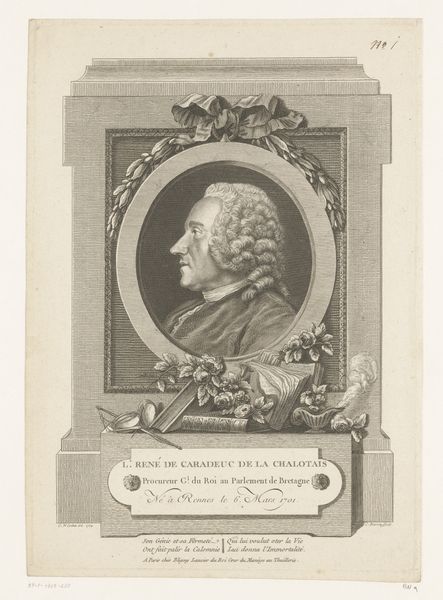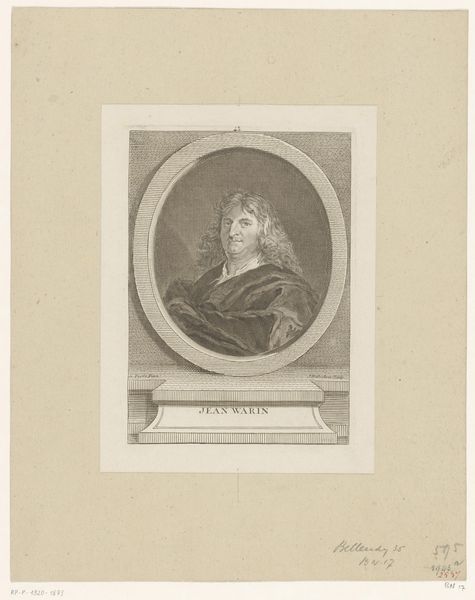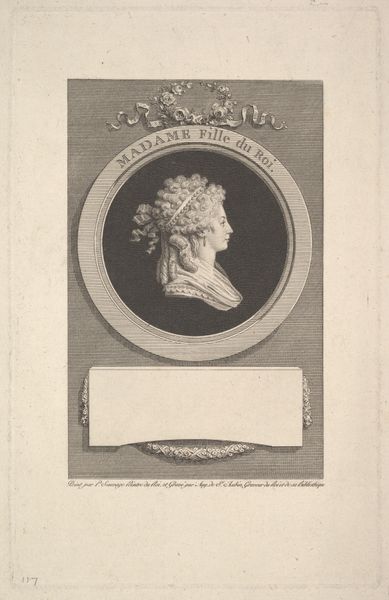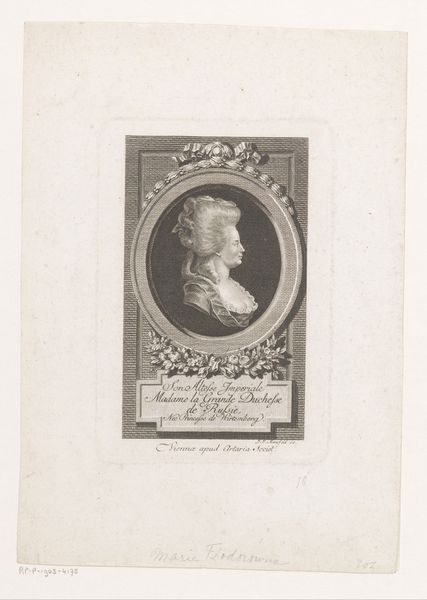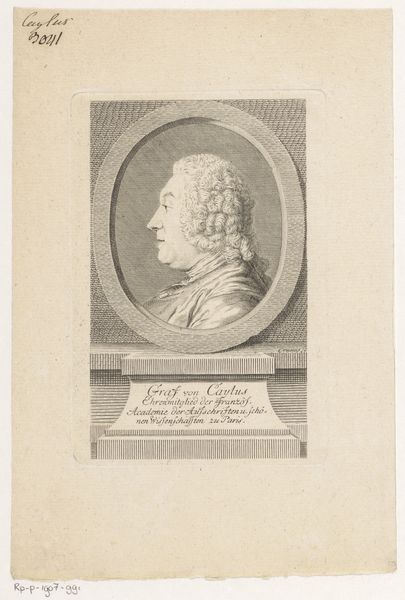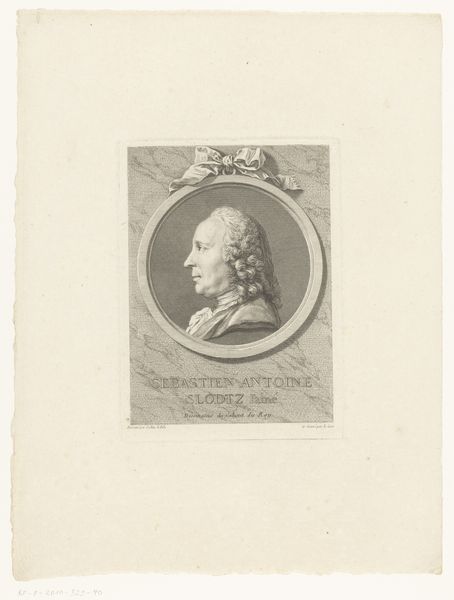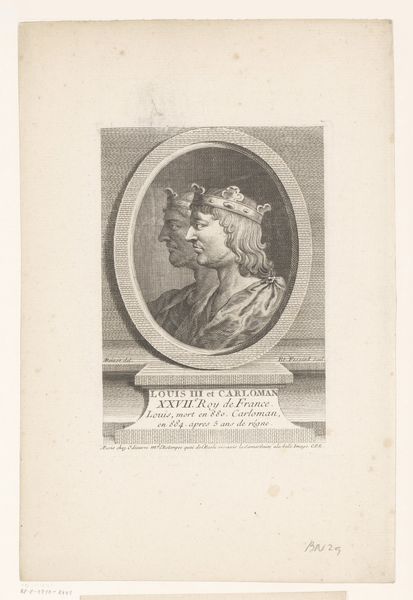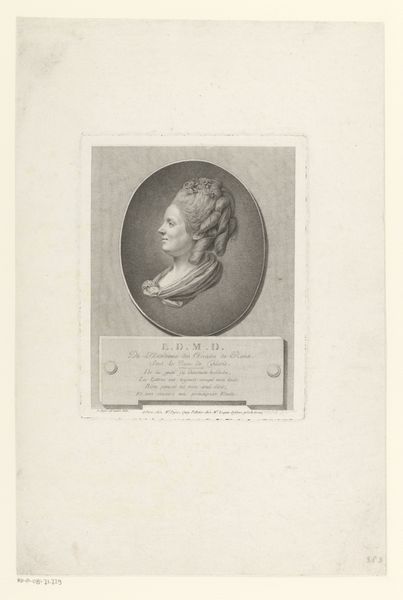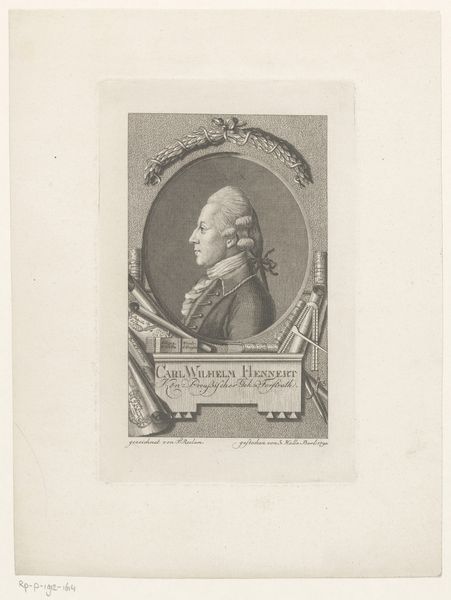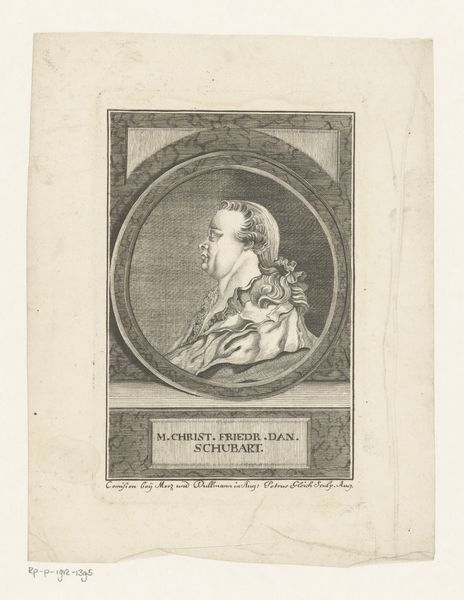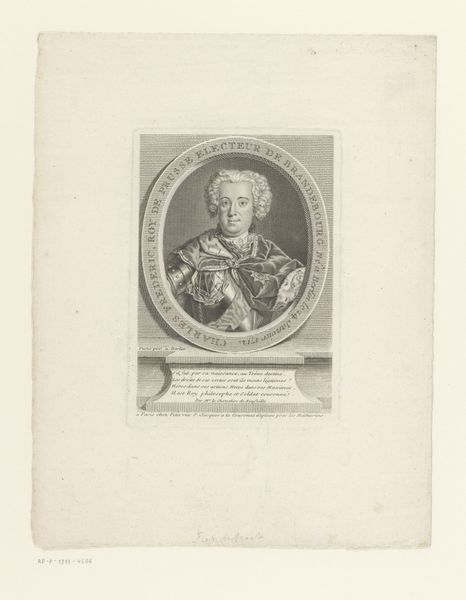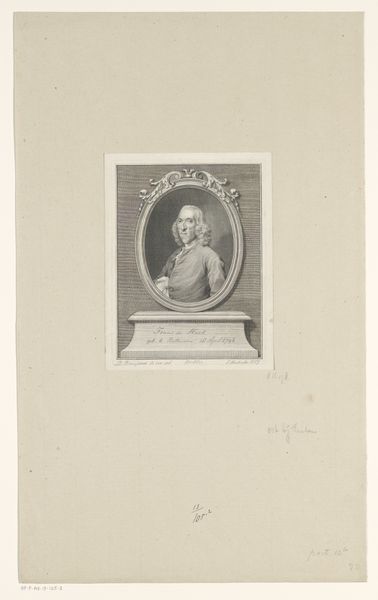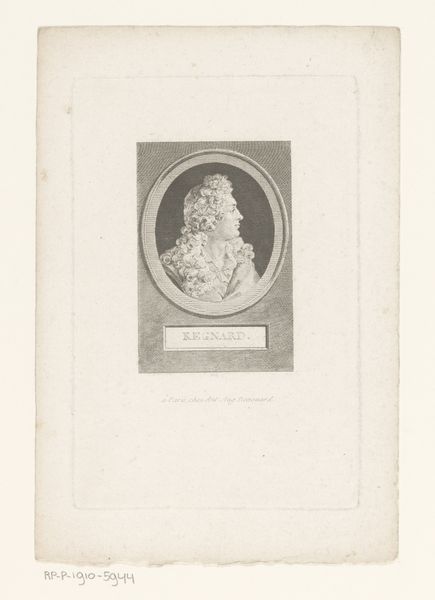
Dimensions: height 175 mm, width 121 mm
Copyright: Rijks Museum: Open Domain
Curator: Immediately, I notice the remarkable detail achieved through engraving. The fine lines and cross-hatching must have taken incredible precision. Editor: Yes, and the portrait of Jean-Philippe Rameau captures the era’s formality and focus on posterity so well. This piece, dating somewhere between 1755 and 1840, offers an intriguing glimpse into how musicians were memorialized and consumed in that period. Curator: Absolutely, and look at the materiality of the engraving. It's likely printed on paper made from processed rags, a common practice then but significant for mass production. This print could have circulated widely. Who made this image, do we know? Editor: Credit goes to Jean Marie Delattre. It seems clear it served to promote Rameau's public image. Notice the flourishes: the oval frame, the dedication plate beneath it. It situates him not just as a musician but as a figure of renown worthy of academic display. The print was clearly distributed commercially. The publishing information appears below the image itself, revealing distribution networks operating in Paris at the time. Curator: Good point! These networks are often forgotten. Considering the consumption of images, was this affordable? Who purchased them? Also, did Delattre make others? Are his engravings uniform? So many questions relating to craft. The medium, of course, also informs the message. The lines and contrasts give the sitter a particular sensibility. The detail feels like work; that informs our reading too. Editor: The affordability would have varied, naturally. But engravings held a certain social cachet; ownership denoted a measure of cultural sophistication. Prints of prominent composers aided the spread of musical culture among middle- and upper-class households. This particular print may have played a role in canonizing Rameau's image and musical legacy for a wider audience beyond the opera house. It represents a moment in which music, visual culture, and commerce coalesced. Curator: A nice connection, really – the intersection of craftsmanship and distribution shaping how we remember the past. Editor: Indeed. This small engraving offers a surprisingly rich insight into a specific historical and cultural moment.
Comments
No comments
Be the first to comment and join the conversation on the ultimate creative platform.
